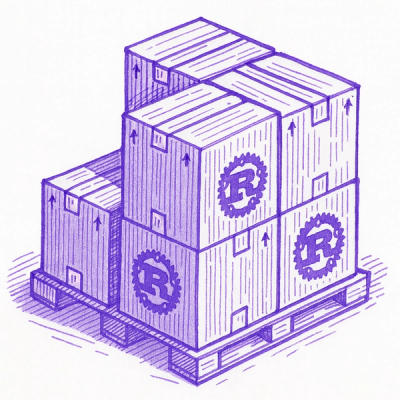
Security News
Crates.io Implements Trusted Publishing Support
Crates.io adds Trusted Publishing support, enabling secure GitHub Actions-based crate releases without long-lived API tokens.
github.com/1wheel/graph-scroll
Simple scrolling events for d3 graphs. Based on stack
graph-scroll takes a selection of explanatory text sections and dispatches active events as different sections are scrolled into to view. These active events can be used to update a chart's state.
d3.graphScroll()
.sections(d3.selectAll('#sections > div'))
.on('active', function(i){ console.log(i + 'th section active') })
The top most element scrolled fully into view is classed graph-scroll-active. This makes it easy to highlight the active section with css:
#sections > div{
opacity: .3
}
#sections div.graph-scroll-active{
opacity: 1;
}
To support headers and intro images/text, we use a container element containing the explanatory text and graph.
<h1>Page Title</div>
<div id='container'>
<div id='graph'></div>
<div id='sections'>
<div>Section 0</div>
<div>Section 1</div>
<div>Section 2</div>
</div>
</div>
<h1>Footer</h1>
If these elements are passed to graphScroll as selections with container and graph, every element in the graph selection will be classed graph-scroll-graph if the top of the container is out of view.
d3.graphScroll()
.graph(d3.selectAll('#graph'))
.container(d3.select('#container'))
.sections(d3.selectAll('#sections > div'))
.on('active', function(i){ console.log(i + 'th section active') })
When the graph starts to scroll out of view, position: sticky keeps the graph element stuck to the top of the page while the text scrolls by.
#container{
position: relative;
}
#sections{
width: 340px;
}
#graph{
margin-left: 40px;
width: 500px;
position: sticky;
top: 0px;
float: right;
}
On mobile centering the graph and sections while adding a some padding for the first slide is a good option:
@media (max-width: 925px) {
#graph{
width: 100%;
margin-left: 0px;
float: none;
}
#sections{
position: relative;
margin: 0px auto;
padding-top: 400px;
}
}
Adjust the amount of pixels before a new section is triggered is also helpful on mobile (Defaults to 200 pixels):
graphScroll.offset(300)
To update or replace a graphScroll instance, pass a string to eventId to remove the old event listeners:
graphScroll.eventId('uniqueId1')
FAQs
Unknown package
Did you know?

Socket for GitHub automatically highlights issues in each pull request and monitors the health of all your open source dependencies. Discover the contents of your packages and block harmful activity before you install or update your dependencies.

Security News
Crates.io adds Trusted Publishing support, enabling secure GitHub Actions-based crate releases without long-lived API tokens.

Research
/Security News
Undocumented protestware found in 28 npm packages disrupts UI for Russian-language users visiting Russian and Belarusian domains.

Research
/Security News
North Korean threat actors deploy 67 malicious npm packages using the newly discovered XORIndex malware loader.